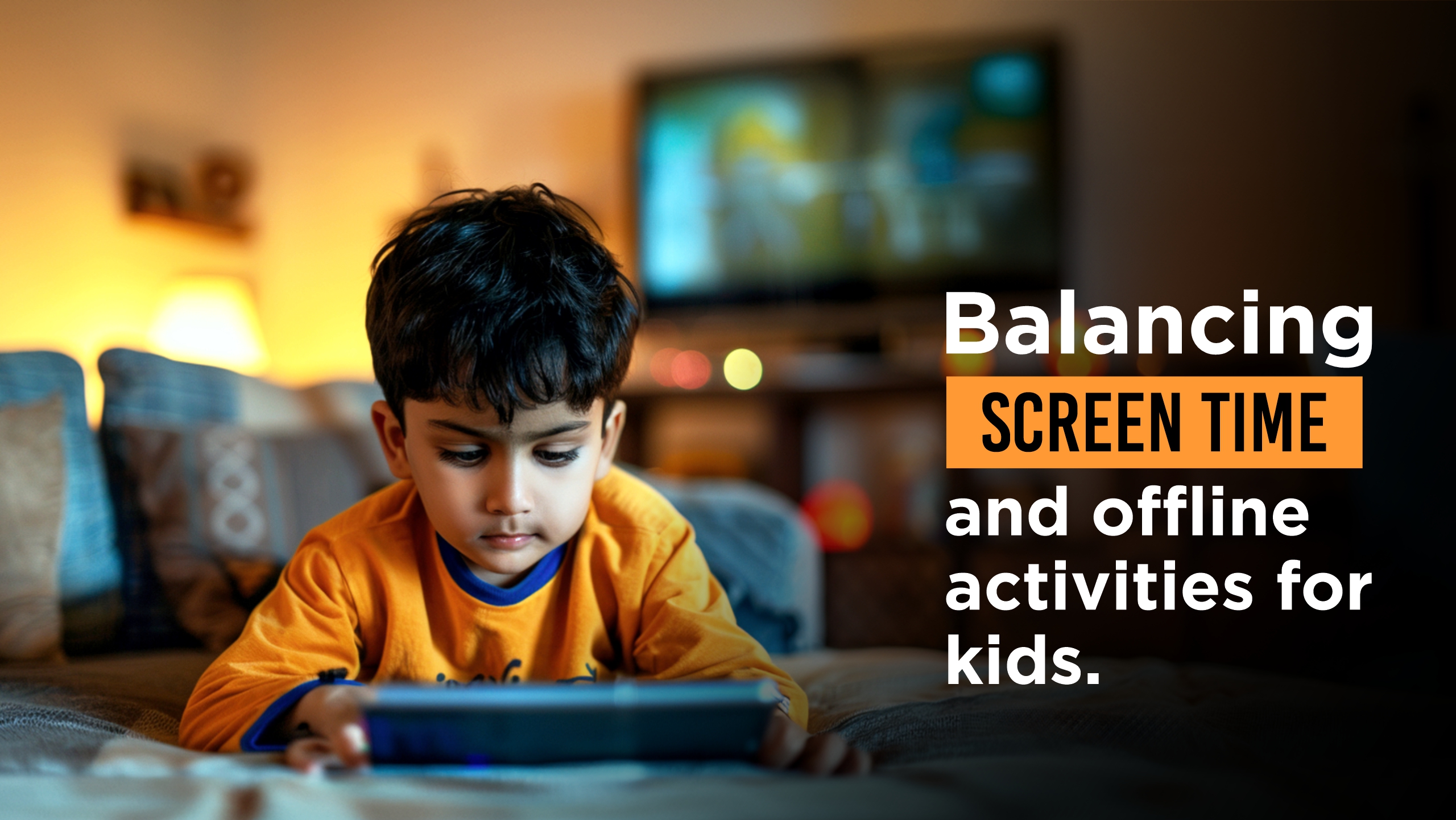In today’s digital age, screens are an integral part of our daily lives. Children and adults alike use devices for education, entertainment, and communication. However, balancing screen time with offline activities is essential for maintaining physical health, social skills, and overall well-being.
Here are 7 tips for managing digital device use while encouraging more physical and social activities.
1. Set Clear Limits and Guidelines – Establishing clear rules about screen time is crucial. Parents should define how much screen time is appropriate based on the child’s age and needs. For example, the Indian Academy of Paediatrics’ (IAP) recommends no more than one hour per day of high-quality screen time for children aged 2 to 5 years. For older children and teens, it’s beneficial to create a schedule that balances screen time with other activities. Make sure these rules are consistent and well-communicated, so children understand what is expected of them.
2. Encourage Active Screen Time – Not all screen time is equal. Encourage active screen time that involves physical activity or educational content. There are numerous apps and video games that promote movement, such as dance games or interactive fitness programs. Educational apps can also be beneficial, provided they engage children in learning new skills or knowledge. By selecting high-quality, interactive content, parents can make screen time more productive and beneficial.
3. Designate Screen-Free Zones and Times – Creating screen-free zones and times in your home can help reduce excessive screen use. For instance, make mealtimes and bedrooms screen-free areas. Encourage family members to leave their devices outside these zones to foster face-to-face interactions. Designate certain times of the day, such as during homework or before bedtime, as screen-free periods. This not only helps in reducing screen time but also promotes healthier habits and better sleep.
4. Model Balanced Screen Use – Children often mimic their parents’ behaviours, so it’s important for adults to model balanced screen use. Show your children that you value offline activities by engaging in them yourself. Read books, exercise, or spend time outdoors. By demonstrating a healthy balance between screen time and other activities, parents can set a positive example for their children to follow.
5. Promote Physical Activities and Hobbies – Encouraging children to participate in physical activities and hobbies can naturally reduce their screen time. Sign them up for sports, dance classes, or martial arts. Provide opportunities for them to explore different hobbies like drawing, playing musical instruments, or gardening. These activities not only keep children physically active but also help develop their skills and interests.
6. Schedule Family Activities – Planning regular family activities that don’t involve screens is a great way to ensure quality time together while reducing device dependency. Go for hikes, bike rides, or picnics in the park. Board games, puzzles, and craft projects are excellent for indoor family fun. These activities foster family bonding and create lasting memories, all while keeping everyone engaged in the real world.
7. Encourage Social Interactions – Promote social interactions by arranging playdates, team sports, or group activities. Encourage your children to spend time with friends in person rather than solely through digital communication. Social interactions help children develop essential communication and interpersonal skills. It also gives them a chance to practice empathy, cooperation, and problem-solving in real-world scenarios.
Balancing screen time with offline activities is crucial for a child’s development and overall well-being. By setting clear limits, encouraging active screen time, designating screen-free zones, practising balanced behaviour, promoting physical activities, scheduling family time, and fostering social interactions, parents can help their children achieve a healthy balance. In doing so, they ensure that screens serve as a tool for learning and entertainment without overshadowing the richness of real-life experiences.


Stay connected, stay informed, and thrive with Narayana Educational Institutions!

